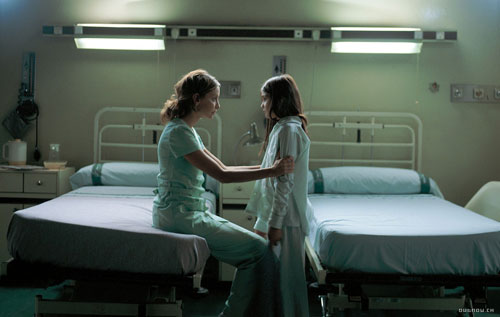News
Interview with Emma Díaz – Part Two
Last week we posted the first part of this interview with Emma Diaz, colorist and postproduction technician with a 13-year career in the industry. She has worked on several TV series among which we can find Red Eagle, Physics or Chemistry, Los Hombres de Paco and movies such as Fragile, The Kovak Box o Remake. Here you have the rest of the interview.
Is there a cinematographer you work particularly well with?
There are many with whom I have worked well and have taught me a lot, I could not highlight. For me, Macari Golferichs has been a great teacher, and Xavi Giménez also marked me because he was my first film, and he was very patient with me. And from there also Carles Gusi, Pablo Rosso… With Carles I learned a lot because he has an eye… and that was his first work in digital (referring to La Caja Kovak). In my life I have come across great professionals and each one has given me different things.
What is your favorite title of the ones you have colorized and why?
Frágiles was a challenge for me because it was the first film I made and I had the great honor of working with Xavi Giménez and, although I suffered a lot, I learned a lot. I also suffered a lot because filmmaking is very different from television. When you do a digital color correction, an intermediate, when you see the film tests, it’s very scary, until you manage to balance the analog and digital projection.
I also enjoyed the Kovak Box very much.
What film or project impresses you and would you like to have participated in it as a colorist?
Millions (he laughs). Traffic, for example.
Do you look for visual references when color grading projects, in film, photography, painting, etc.?
Yes, you always look for references. When I meet a cinematographer I like to see his previous work; and many times he or the director of the film will give you references. It’s inevitable, everything is done.
Do you have a visual style that you consider your own or that you particularly like?
It is difficult. For advertising colorists it’s easier to have their own identity, and so cinematographers go looking for them. I don’t think that in television or film it’s good to have your own identity. Photography has to enrich, it is one more part of the film and not a way to show off. If the viewer looks at that picture because it’s pretty, for me, it’s a failure. You have to give each project what is needed for that project, not go against it because you like a certain style better.
How do you see the future of color correction?
Speaking of cinema, I imagine the future is going towards digital projection, skipping the analog step. With cameras like Alexa or Red One in logarithmic, the equipment and the image with more definition, every day you have more range and more playability, then it will be a lot of fun.
What would you say to people who want to get started in the colorist profession?
Let them learn English and leave Spain (he laughs). It’s complicated to get started. It’s a bit of a thankless profession because when the work is well done it doesn’t have to stand out, what you have to do is have a good time. But above all, they have to see a lot of movies and nothing, they have to be encouraged.


